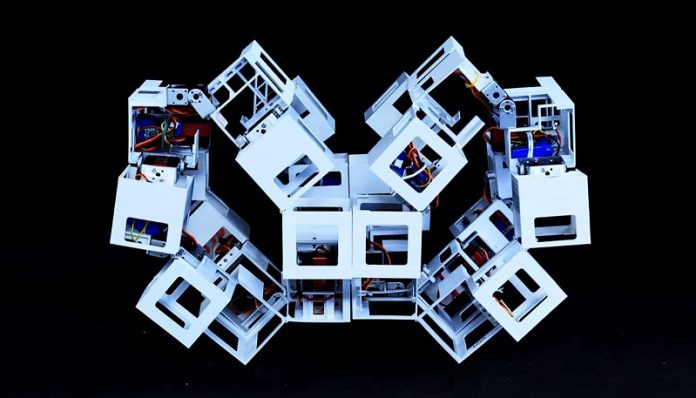
Inspired by the art of origami, engineers have developed a new robot that can change into more than 1,000 different shapes using only three small motors.
This breakthrough could lead to versatile robots that can perform multiple tasks and even carry heavy loads.
Such robots could be used in space exploration, where their ability to transform and adapt would be incredibly useful.
Jie Yin, an associate professor at North Carolina State University, explained the team’s goal: “We want to create many different shapes with as few motors as possible.”
The researchers used a concept found in nature, like the way muscle fibers are layered, to design their robot. However, instead of muscle, they used plastic cubes.
The team created these cubes using a 3D printer and connected 36 of them with rotating hinges. Some hinges were fixed with metal pins, while others could move wirelessly thanks to a motor.
With just three motors, they managed to make the cubes form over 1,000 shapes, such as tunnels, bridges, and even multi-story structures.
The robots, called “transformer bots,” can move in any direction—forward, backward, and sideways—simply by changing their shape.
They don’t need feet to move. They can also quickly change from a flat shape to a larger box-like cube.
Despite being lightweight, these bots are strong enough to carry loads that are three times their own weight.
Next, the researchers want to improve the transformer bots even more. Yanbin Li, a postdoctoral researcher, said, “We aim to create a stronger structure that can carry heavier loads. For example, we want to design a structure that can transform into a car shape.”
They also plan to test the bots in real-world situations, like in space missions.
Antonio Di Lallo, another postdoctoral researcher, believes these bots could be used as space robots and habitats. “The robots are modular, meaning you can send them to space flat, then assemble them into shelters or habitats, and later disassemble them if needed.”
Jie Yin emphasized that the bots should be easy for users to put together and control. The project was funded by the National Science Foundation and represents an exciting step forward in robotics.
This new technology shows how origami-inspired designs can create robots that are both versatile and practical, potentially transforming how we approach tasks in space and other challenging environments.
Source: North Carolina State University.



